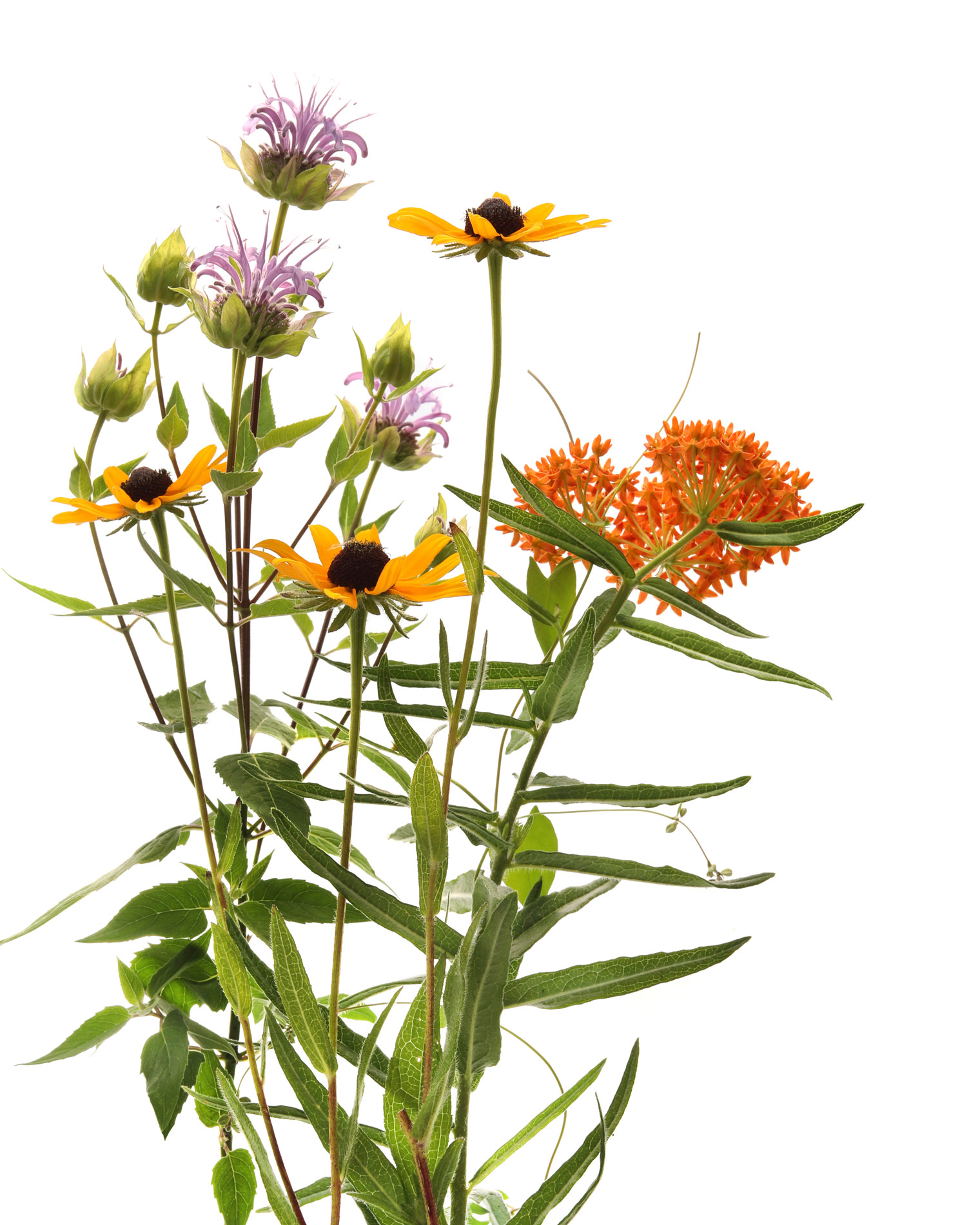
pollinator paradise
i picked this handful of wildflowers beside the parking lot of my local pharmacy. these are all pollinator favorites. it is high summer.
purple bee balm, yellow daisies, and orange butterfly weed
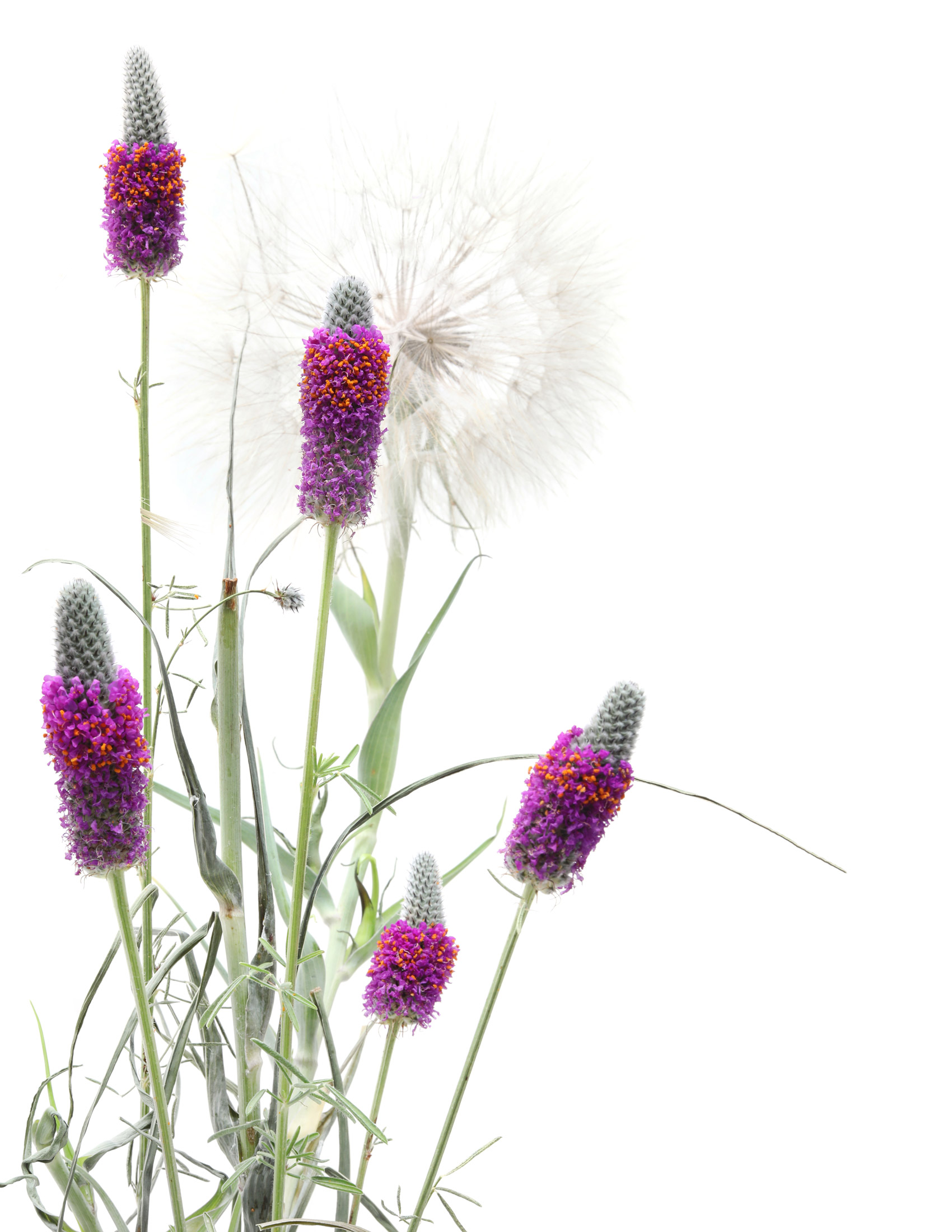
AI or real?
this is a real photo. i know, because i photographed it this afternoon. but when i sat down just now to post it, it occurred to me it looks like an AI generated image, with the goatsbeard “photoshopped in”. but i assure, dear reader, that it is not. the open-field wildflowers are peaking. there are dots of color everywhere–with purple, yellow, and orange in highest abundance. these tonsured prairie clovers are always a happy sight for me. someone surely missed an naming opportunity–for they should certainly have been called purple monks of the prairie.
purple prairie clover with goatsbeard (Dalea purpurea)
-
Beautiful!
reply
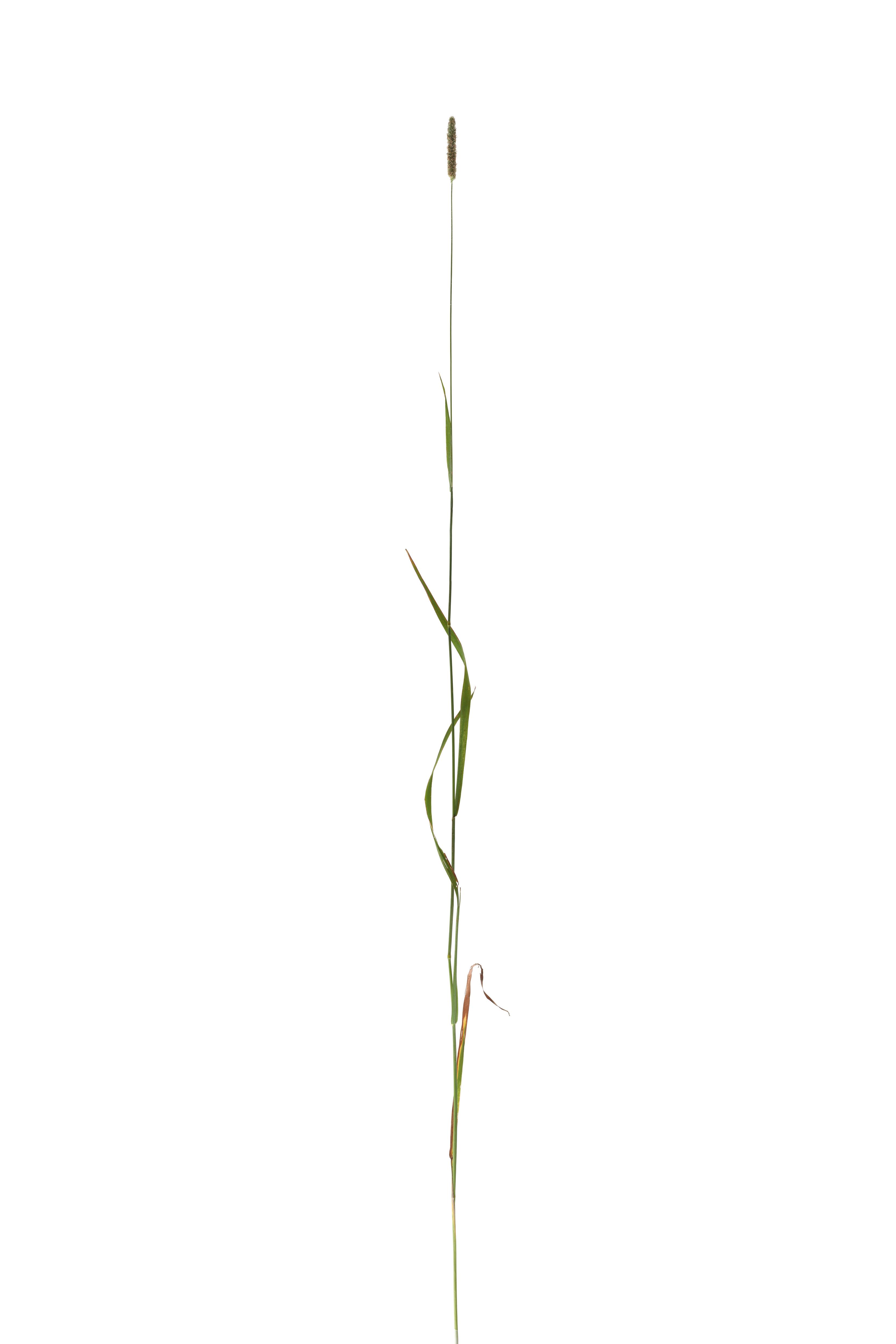
flimsy and improbable
this grass stem is 44 inches tall. timothy grass routinely grows up to 60 inches (1 ½ meters). stop for a moment and think about the absurdity of growing 5 feet tall on such a wisp of stem. the evolutionary reason is easy enough to imagine–put all your resources into height in order to push your seedhead above your fellow prairie plants so the wind will be more likely to blow your seeds around. but still. zero to sixty in three months. if it was a product pitch, you’d reject it.
timothy grass in july (Phleum pratense)
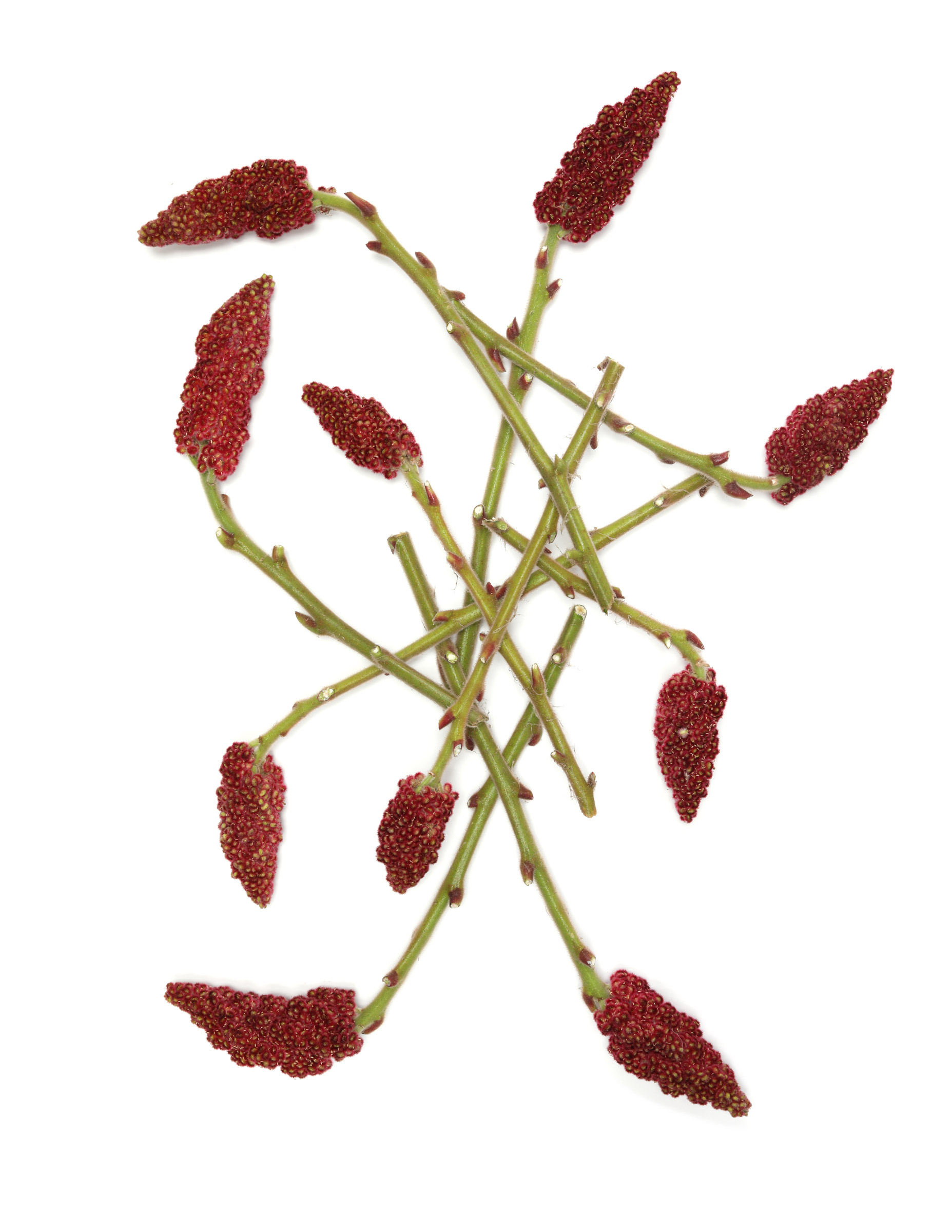
everything is fruiting
the strawberries have been picked. the raspberries are ready. the blueberries are ripening. and the staghorn sumac in turning red. everything is fruiting.
fruiting staghorn sumac (Rhus typhina)
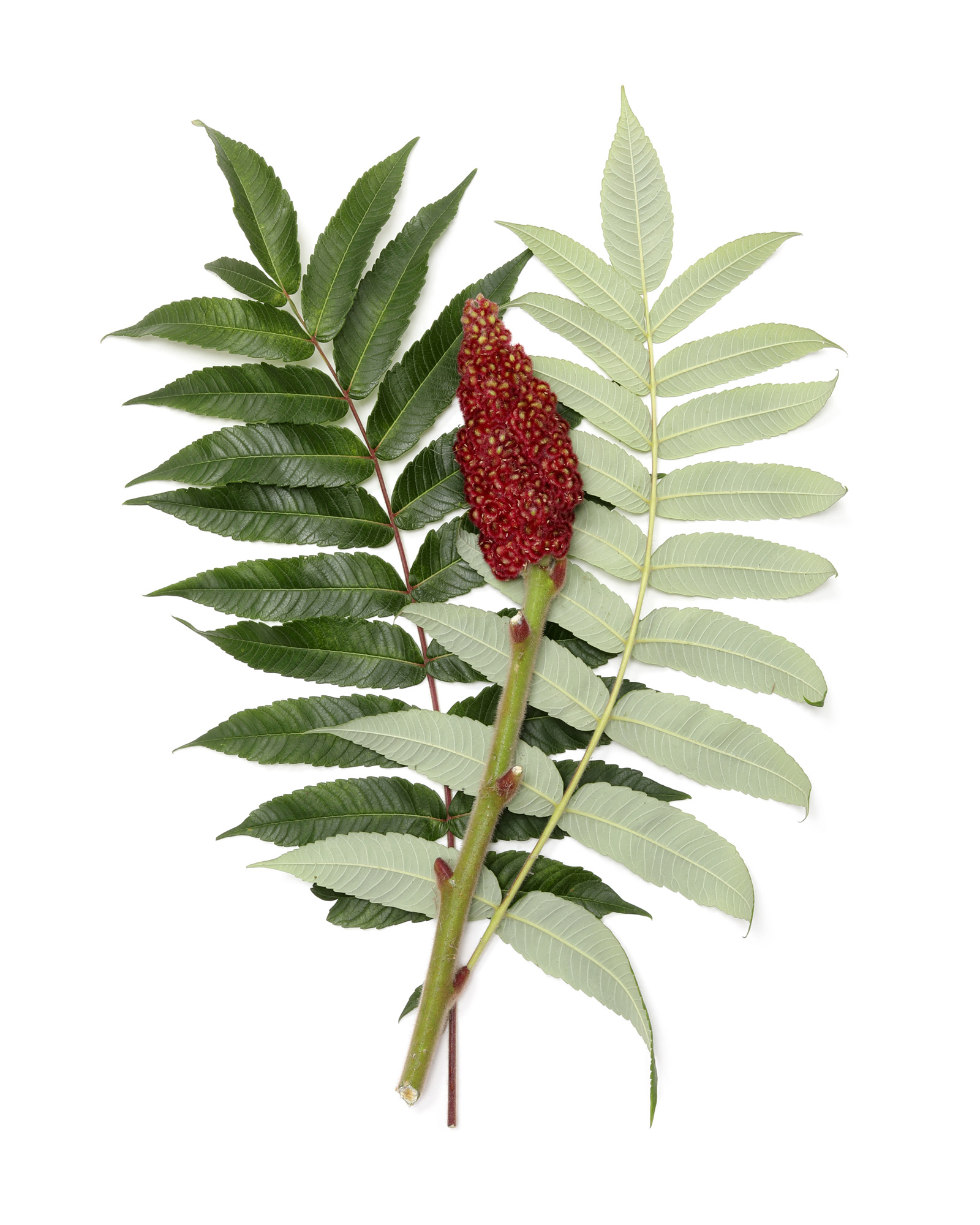
a personal favorite
staghorn sumac is one of my all-time favorite native shrubs. the fruits are just starting to turn red right now. the berries are edible and have a lemony tartness—ground into a spice they are used a lot in middle easter cuisine. they can also be made into a lemonade. natural dyers love them for their high tannic (light safe) dyes. i love them for their unique branching, the way the shiny upper and dull lower leaves catch the light on windy summer days. and for the spectacular fall leaf color they provide every september. a staggering shrub.
staghorn sumac fruit (Rhus typhina)
-
Some beekeepers use the dried flowers in their smokers.
reply



So pretty!